The subject of teen cannabis use in Canada has sparked significant debate following a recent study showing a substantial rise in use, particularly after the legalisation of cannabis edibles in 2019. According to research published in JAMA Network Open, the use of cannabis among Canadian teens increased by 26% in the provinces where edibles became legally available, and edible-specific use surged by 43%. This raises important questions about the unintended social effects of freer cannabis access.
What is Driving Teen Cannabis Use in Canada?
Canada legalised dried cannabis use in October 2018, followed by the legalisation of cannabis edibles and extracts a year later in all provinces except Quebec. While federal laws prohibit the sale of cannabis to those under 18, the increased availability of edibles seems to have influenced teen attitudes and accessibility.
Cannabis edibles come in forms that are particularly appealing to young people, such as chocolates, gummies, and sodas. These products, while regulated with child-resistant packaging and labelling by law, face competition from unregulated and illicit products. These unauthorised products are often designed to look like familiar snacks, making them harder to distinguish and potentially more accessible to teens.
A Closer Look at the Data
The study analysed surveys from over 106,000 students aged 12 to 17 years old. Alarmingly, it noted that cannabis use spiked in provinces that legalised edibles but remained stable in Quebec, where these products are still banned. These figures suggest a clear connection between legalisation and an uptick in teen usage. Dr Hai Nguyen, a senior author of the study, explains that these findings are critical given the well-documented risks of early and consistent cannabis use.
Potential Health Risks Linked to Teen Cannabis Use
Adolescence is a key period of brain development. Introducing cannabis during this phase can lead to both short-term cognitive impairments and long-term dependency risks. Neuroscientist Joshua Gowin further highlights cannabis’s potential effects on the brain, impacting functions such as attention, memory, and decision-making. Regular usage during adolescence has also been linked to an increased risk of developing mental health issues like anxiety, depression, and even schizophrenia later in life.
Additionally, the study finds that alongside increased cannabis use, combined usage of cannabis and alcohol also rose by 28%. Mixing these substances poses significant risks as it often intensifies their effects, leading to higher consumption levels and greater health hazards.
Legalisation and Changing Perceptions
One of the most concerning findings from this research is the changing perception among teens about the risks associated with occasional cannabis use. Legalisation appears to create a sense of normalisation that diminishes the perceived harm of cannabis consumption. This “normalisation effect” makes it even more important to critically assess how laws influencing accessibility shape youth attitudes.
Developing Policies that Protect Youth
Striking a balance between adult access and teen protection is essential in managing the broader impacts of cannabis legalisation. Here are potential strategies based on expert recommendations:
Tighter Regulations
Ensuring that cannabis edibles come in plain, clear, and regulated packaging is crucial. Additional measures to prevent the sale of illicit cannabis products that mimic everyday snacks should also be enforced, with legislation focusing on online platforms where teens could gain access.
Education Campaigns
Public awareness campaigns focusing on the risks of cannabis use for adolescents are another key prevention strategy. Schools, communities, and families can collectively contribute by fostering knowledge, teaching the long-term impact of these substances on mental and physical health, and addressing misconceptions.
Keeping Distribution Away from Youth
Another solution is enforcing regulations that require cannabis retailers to be located at an appropriate distance from schools, parks, and recreational facilities. This measure would limit physical accessibility, especially for younger teens.
Effective Family Communication
Families play a critical role in guiding teens. Open and honest dialogues can help bridge the gap between misunderstood perceptions and facts. Parent-child communication books and guides about cannabis use can support these conversations, enabling informed decisions at home.
Looking Beyond the Data
The discussion around teen cannabis use in Canada often highlights the complexities of legalisation’s impact. Critics of cannabis legalisation laws frequently cite studies as cautionary tales, emphasizing the potential developmental risks of increased access. However, as Joshua Gowin notes, establishing direct causation between legalisation and increased use is challenging. Cultural attitudes toward cannabis may shift before or even drive legislative changes.
Further research is essential to understand evolving trends, particularly the long-term effects of legalisation on teen cannabis use. This includes examining usage patterns across age groups and identifying effective strategies to mitigate risks associated with cannabis consumption among youth.

